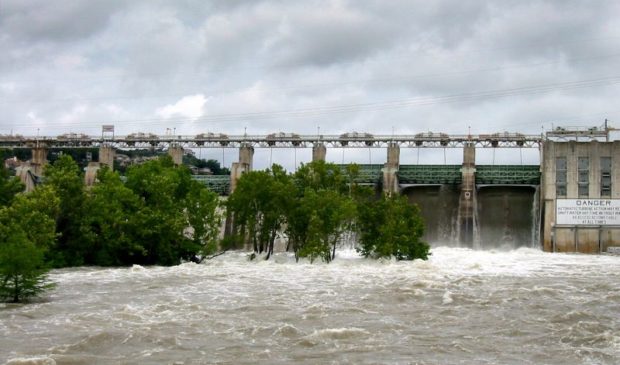Flash Flood Alley could see some action on flood relief
Wednesday, October 26, 2022 by
Andrea Guzman In the wake of 2017’s Hurricane Harvey, the Texas Legislature directed the creation of a plan that could guide state and local flood control policy. Now the regional plan concerning Central Texas is getting close to the finish line.
Set for completion in January, the plan includes more than $400 million in estimated funding needs. The vast majority – about $383 million – is slated for projects on wastewater treatment plants like South Austin Regional and Walnut Creek as well as other areas like Shoal and Waller creeks. The plan’s focus is on large-scale flooding rather than streets or homes, and the remainder will go toward studies and flood strategies.
The regional strategy aims to protect against fatalities and property damage caused by flooding, and will later become part of a statewide plan that’s expected to be finished in September 2024.
Including the Colorado, Lavaca and San Bernard river basins, the local region covers 55,550 stream miles and 1.9 million people across dozens of municipalities. Austin holds about half of the population.
Matt Hollon, division manager of planning for the Watershed Protection Department, laid out key aspects of the plan and funding estimates during an Austin Water Oversight Committee meeting last week.
If funding help from the state or the federal government is secured, Hollon said it would “take a lot of pressure off” Watershed Protection and other departments’ budgets. He went on to note that other metros like Houston, Dallas and San Antonio may also require big line items.
“There is going to be a lot of money asked of the state in these plans when it comes together,” Hollon said.
While he doesn’t anticipate that the Legislature will provide the hundreds of millions of dollars needed, he’s hopeful that some portion could be covered with money from the state.
Mayor Pro Tem Alison Alter asked Hollon about the possibility of the Legislature earmarking funds for the regional plan during the coming session beginning in January. She said it could be useful to share information on the plan, so even if they don’t get to it this session, it’s on their radar for the next one.
“They do happen to have a surplus this session – I don’t know whether they’ll have one in two years – and the longer that we wait to do this work, the more consequences there are of not doing it,” Alter said.
Vanessa Fuentes, chair of the water oversight committee, noted a flood infrastructure fund that the Legislature established in 2019 from which Austin received grant money for citywide floodplain studies.
“It seems like there is opportunity for us to advocate, so it would make sense for us to have a strong legislative push on this effort,” Fuentes said.
Central Texas is located in Flash Flood Alley, one of the most flood-prone regions on the continent. Still, Hollon described Austin’s flood preparedness as outstanding.
“We’re preventing new problems, we’re preparing for floods,” Hollon said. “What we still have, of course, is a lot of legacy needs from these older developments that were put into place well before our modern flooding and protection regulations.”
In 2019, the city updated its floodplain regulations in response to the Atlas 14 study, which projected future flood events to be more intense than previously estimated. Hollon noted that some communities aren’t as up to speed as Austin is.
“That was a big deal, changing our flood regulations and making sure we’re up with the times with rainfall intensities,” he said.
Regional and state plans for flooding are slated to be updated every five years. On the regional level, Hollon noted an Austin initiative that already offers a chance for more local input.
“We think the Rain to River project is a terrific way for the community to weigh in and tell us what your needs are,” he said.
Photo made available through a Creative Commons license.
The Austin Monitor’s work is made possible by donations from the community. Though our reporting covers donors from time to time, we are careful to keep business and editorial efforts separate while maintaining transparency. A complete list of donors is available here, and our code of ethics is explained here.
You're a community leader
And we’re honored you look to us for serious, in-depth news. You know a strong community needs local and dedicated watchdog reporting. We’re here for you and that won’t change. Now will you take the powerful next step and support our nonprofit news organization?











